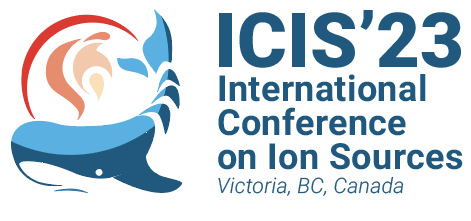Speaker
Description
The Reaccelerator (ReA) of the Facility for Rare-Isotope Beams (FRIB) employs an Electron-Beam Ion Trap (EBIT) as a charge breeder to reaccelerate rare-isotope beams to several MeV/u. The ReA EBIT uses a Pierce-type electron gun with its cathode partially immersed in the fringe field of a 4-T superconducting solenoid. A barium-impregnated tungsten dispenser cathode is used to produce an electron current of 300 – 600 mA, corresponding to an electron current density of 170 – 340 A/cm$^{2}$ in the ion trap region. The maximum trap capacity of the ReA EBIT is 10$^{10}$ elementary charges. However, this is insufficient to handle high RIB rates, which are expected to exceed to 10$^{10}$ particles/s in some case. In order to accept such rates, a High Current Electron-Beam Ion Source (HCEBIS) has been built and is now being commissioned. The HCEBIS is based on main components of the former Test-EBIS at Brookhaven National Laboratory. The HCEBIS electron beam is launched from a 9.2-mm lanthanum hexaboride convex cathode immersed in a 0.1-T axial magnetic field from a room-temperature coil and adiabatically compressed into the 4-T field of a superconducting solenoid. An electron-beam current of 1 A with a 50% duty cycle has been produced. More than 2 A was obtained for short duty cycles. An upgrade to increase the electron-beam current of up to 4 A in the future will allow for a maximum trap capacity of 2.4×10$^{11}$ elementary charges. This paper presents the status of the HCEBIS, including the results of the electron-beam commissioning and systematic studies.
This material is based upon work supported by the U.S. Department of Energy, Office of Science, Office of Nuclear Physics and used resources of the Facility for Rare Isotope Beams (FRIB), which is a DOE Office of Science User Facility, operated by Michigan State University, under Award Number DE-SC0000661.
| Funding Agency | U.S. Department of Energy, Office of Science |
|---|---|
| Email Address | son@frib.msu.edu |
| I have read the Code of Conduct to attend ICIS2023. | Yes |

